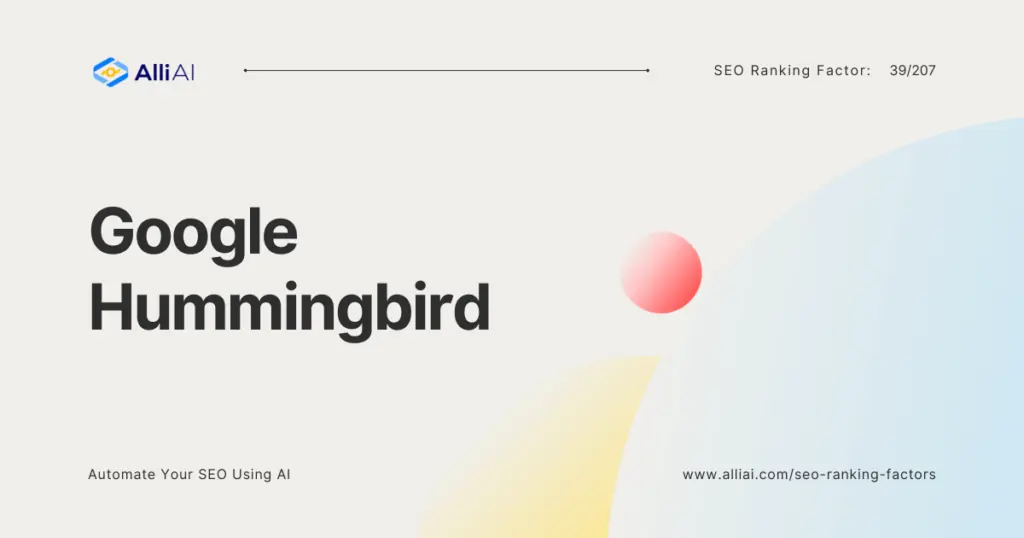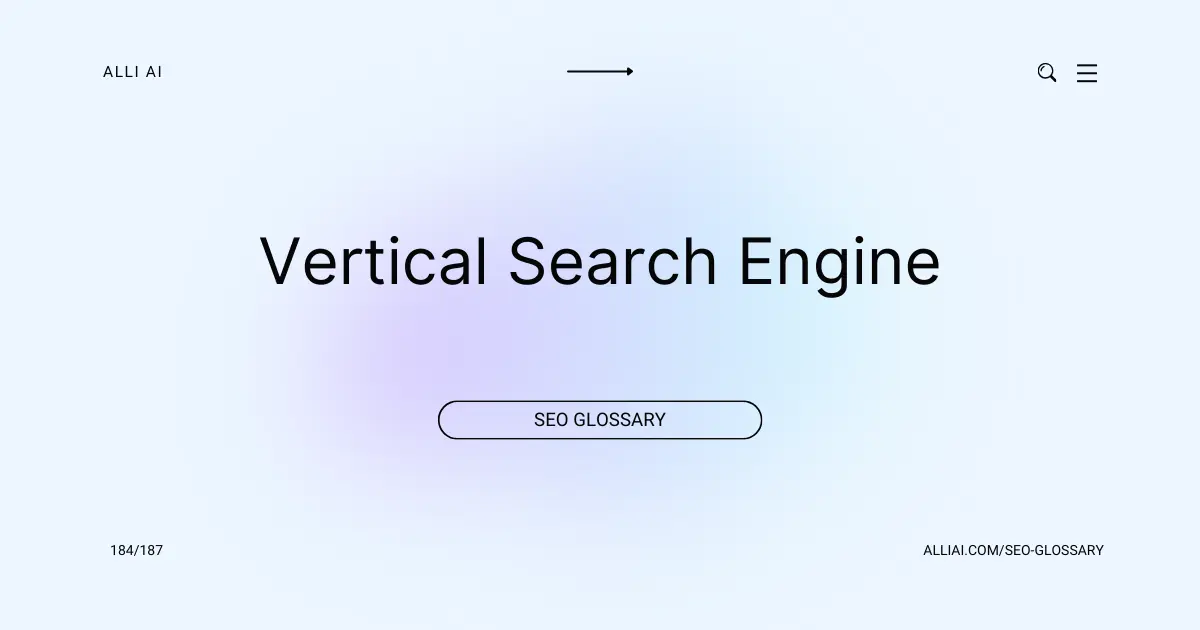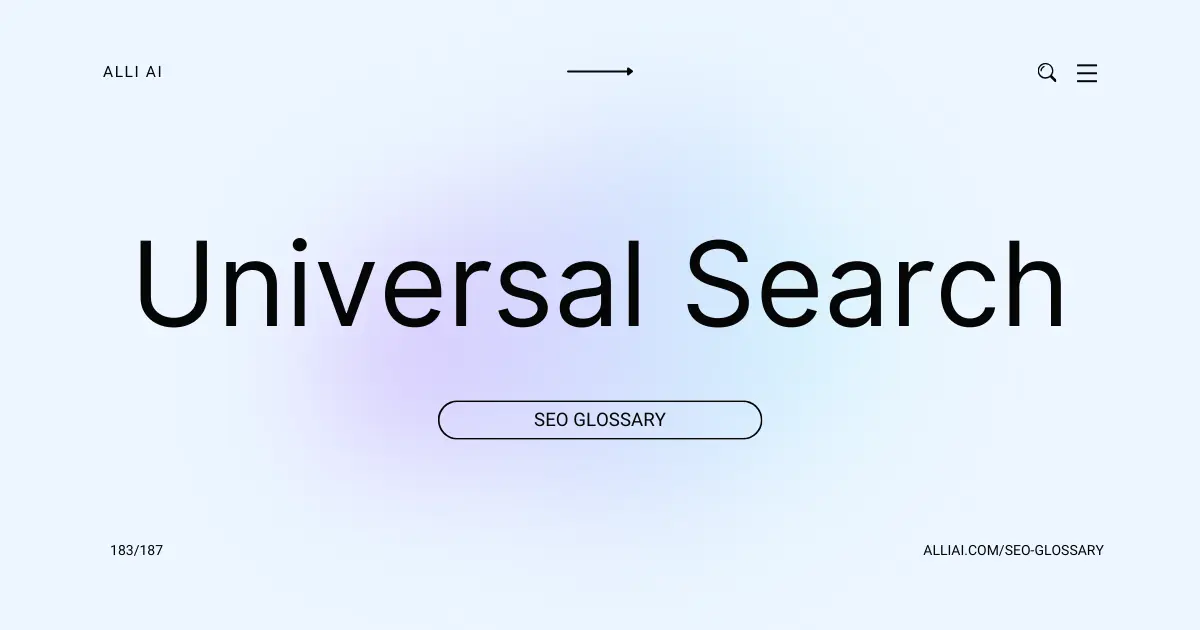What Does Google Hummingbird Mean?
Google Hummingbird is an update to Google’s search algorithm introduced in 2013, designed to better understand the intent behind users’ search queries. This update allows Google to process conversational language and complex questions more effectively, delivering more relevant search results by interpreting the full context rather than just individual keywords.
Where Does Google Hummingbird Fit Into The Broader SEO Landscape?
Google Hummingbird is an algorithm update that was first announced in 2013. It represents a significant shift in Google’s approach to search queries, focusing on understanding the context and intent behind a user’s search rather than just the individual keywords. This change facilitates a more natural, conversational style of searching. For SEO, Hummingbird emphasizes the importance of quality content that answers the searcher’s intent comprehensively rather than relying solely on keyword optimization. This shift necessitates a more holistic content strategy, where thematic relevance and semantic search optimization play crucial roles in improving search engine rankings.
Real Life Analogies or Metaphors to Explain Google Hummingbird
1. Google Hummingbird as a Librarian: Imagine you’re in a huge library filled with billions of books, and you’re looking for one that not only covers your topic but also matches the style and depth you need. Google Hummingbird is like an expert librarian who doesn’t just point you to a section of the library but scans through summaries, contexts, and contents of each book rapidly to suggest the best match for your query.
2. Google Hummingbird as a Chef: Consider a chef tasked with creating a meal that perfectly suits your palate, using ingredients and techniques that correspond wisely to your question about food. Google Hummingbird does similarly for information, mixing and matching from billions of web pages to serve up the most relevant and wholesome answers to your queries.
3. Google Hummingbird as an Orchestra Conductor: Each section of an orchestra plays a different instrument that contributes distinct sounds to a symphony, much like different parts of a query or different websites on the internet. Google Hummingbird acts as the conductor, ensuring that all parts of your search query work in harmony and leading to the most relevant and fluid user experience, just as a conductor ensures a harmonious and cohesive performance.
4. Google Hummingbird as a Puzzle Solver: Imagine you’re faced with a complex jigsaw puzzle with pieces scattered all around. Google Hummingbird approaches this by understanding not only what each individual piece looks like but also how it connects to the surrounding pieces, ensuring that the overall picture answers your query fully, even if your questions are complex or phrased in unusual ways.
5. Google Hummingbird as a Personal Shopper: Just as a personal shopper assesses your style, needs, and preferences to pick out clothes or items that best fit your description, Google Hummingbird personalizes your search inquiries. It sifts through the immense store of the internet to find information that not only matches your search words but also anticipates and aligns with the intent behind your query.
How the Google Hummingbird Functions or is Implemented?
Google Hummingbird is an algorithm used by Google Search to better understand the intent and contextual meaning behind user queries. It was introduced in 2013 to improve search accuracy by focusing more on the semantics of search queries rather than individual keywords.
1. Semantic Search: Unlike previous algorithms, Hummingbird looks at the entire query for its meaning, rather than parsing it word by word. It considers the context of each word in the search phrase.
2. Knowledge Graph Integration: It uses Google’s Knowledge Graph to improve on conceptual searches, making use of known relationships between entities, facts, and dates associated with the keywords involved.
3. Conversational Search: Designed to handle conversational queries, Hummingbird is particularly potent in understanding and processing natural language, which allows it to manage voice searches effectively.
4. Ranking Signals: While Hummingbird itself is more about query interpretation, it works in conjunction with other algorithms (like Penguin and Panda) which handle ranking signals such as links, quality content, and other SEO factors.
5. Synonyms and Themes: Hummingbird can discern synonyms and thematic connections across user queries, helping Google deliver more appropriate results even if the exact words in the query aren’t present in the indexed content.
6. Speed and Precision: Fittingly named after the fast and accurate hummingbird, the algorithm is designed to increase the speed and precision of search results, processing vast amounts of information quickly to deliver relevant results.
7. PageRank: While the fundamental aspects of PageRank (which evaluates the quality and quantity of links to a webpage) still play a role, Hummingbird integrates these into a broader, more nuanced understanding of page content.
Impact Google Hummingbird has on SEO
Google Hummingbird impacts SEO performance, rankings, and user experience by focusing on the user’s intent behind a search query, rather than just the individual keywords. This semantic search approach allows Google to better interpret the context and nuances of queries, leading to more relevant search results. Consequently, websites that provide comprehensive, contextually relevant content that aligns closely with user intent are favored in rankings over those that merely optimize for specific keywords.
This algorithm encourages a richer, more engaging user experience as content becomes more informative and less about keyword repetition. Websites must focus on natural language and answering questions comprehensively, turning them into authoritative sources on particular topics to gain visibility and higher rankings. As a result, SEO strategies need to be more holistic, emphasizing quality content creation, structured data, and mobile optimization to meet the user-centric demands of Google Hummingbird.
SEO Best Practices For Google Hummingbird
1. Focus on Natural Language and Conversational Queries: Optimize content for the way people naturally speak or ask questions, especially for voice search.
2. Use Long-tail Keywords: Incorporate longer, more specific phrases that users might use in conversational queries.
3. Develop In-depth Content: Create comprehensive content that covers a topic extensively to address the intent behind search queries.
4. Optimize for Mobile: Ensure your website is fully responsive and fast-loading to cater to mobile users.
5. Structure Data with Schema Markup: Implement schema markup to help Google understand the context of the content.
6. Enhance Semantic Relevance: Use synonyms and related terms in your content to build a broader semantic relevance around the topic.
7. Improve Site Speed: Enhance the loading time of your website as page speed is crucial for user experience and SEO.
8. Build a Local SEO Strategy: Use local keywords and create listings in local business directories to optimize for local search.
9. Secure Your Site: Switch to HTTPS to secure your site, as security is a ranking factor.
10. Create Useful FAQs and Help Sections: Address common questions related to your niche in FAQs and help section, using conversational language.
11. Maintain a Natural Flow in Content: Write content that flows naturally and is easy to read, avoiding forced insertion of keywords.
12. Update Existing Content Regularly: Refresh old content to keep it relevant to current standards and user intents.
13. Improve User Engagement: Enhance the user experience by designing an intuitive navigation system and including interactive elements to keep users engaged.
14. Use Content Clusters: Build content around topic clusters to create a comprehensive knowledge base for core topics.
15. Monitor Analytics and User Behavior: Use analytics to track how users interact with your site and refine your strategy based on real data.
Common Mistakes To Avoid
1. Keyword Stuffing: Over-using the same keywords to manipulate rankings can lead to penalties with Hummingbird, which focuses on understanding the intent behind words rather than just the words themselves. Solution: Use natural language and synonyms effectively, focusing on creating content that sounds human and answers the nuances of the user queries.
2. Neglecting Long-Tail Keywords: Hummingbird excels at handling conversational queries. Ignoring long-tail keywords can result in missed opportunities to appear in precise search queries. Solution: Integrate more long-tail keywords that echo natural language and the conversational tone of your target audience.
3. Low-Quality Content: If the content lacks substantive information and doesn’t address user queries comprehensively, it may be undervalued or ignored by Hummingbird. Solution: Focus on creating detailed, high-quality content that provides value and directly addresses the needs of the users.
4. Ignoring Mobile Optimization: Given Hummingbird’s emphasis on serving mobile users effectively, not having a mobile-optimized site can severely impact your traffic. Solution: Ensure your website is responsive and mobile-friendly, with fast loading speeds and accessible navigation.
5. Failure to Use Semantic Markup: Semantic markup like Schema.org helps Google understand the context of your content, which complements Hummingbird’s focus on intent. Solution: Implement structured data to help search engines parse and categorize your content more effectively.
6. Relying Solely on Exact-Match Keywords: Hummingbird’s ability to understand the context means that exact-match isn’t as crucial as before. Solution: Focus on the topic cluster model and themed content that addresses a topic comprehensively rather than just targeting exact-match phrases.
7. Forgetting Local SEO: Hummingbird considers user location for relevant searches, making local SEO crucial for location-based businesses. Solution: Optimize for local search by including region-specific keywords and listings in local business directories.
8. Inadequate Topic Clustering: Not organizing content around topic clusters can make it hard for Google to determine your site’s authority on a subject. Solution: Create content that addresses comprehensive aspects of core topics, using internal linking strategies to guide Google and users through related topics on your site.






